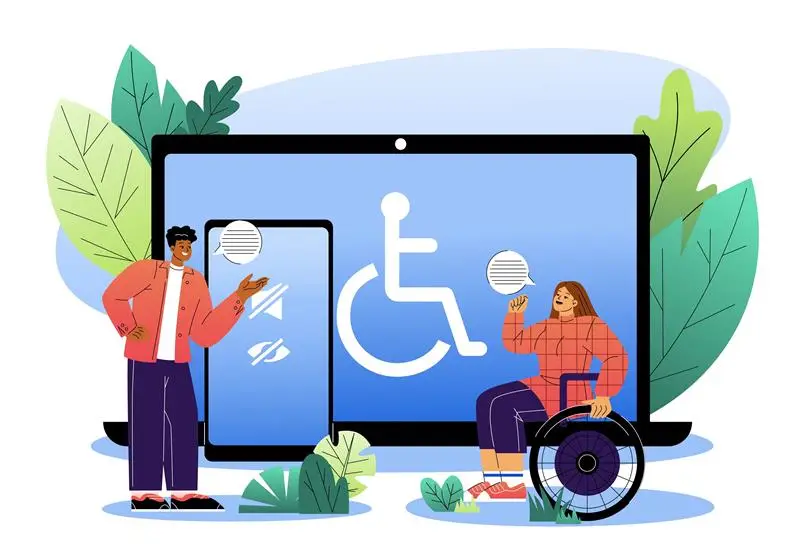Think back to the last time you worked on a creative project – maybe a new website, a digital ad campaign, or a sleek product interface. You probably obsessed over color palettes, typography, and layout. But here’s the question most teams forget to ask: Can everyone actually use it?
Accessibility isn’t just about checking compliance boxes or designing for edge cases. It’s about making creativity truly inclusive – ensuring that your design, message, and experience reach every user, not just the majority.
In 2025, accessibility has evolved from a technical checklist to a creative mindset. And for designers, marketers, and founders, embracing inclusive design is no longer optional – it’s a competitive advantage.
Let’s explore why accessibility matters more than ever, how it transforms the design process, and what creative teams can do to make “designing for everyone” their new standard.
Accessibility vs. Inclusive Design: What’s the Difference?
Before diving in, let’s clear up two terms that often get blurred.
Accessibility
Accessibility focuses on removing barriers that prevent people with disabilities from using your product. It’s about ensuring digital spaces are compatible with assistive tools like screen readers, captions, and keyboard navigation.
Inclusive Design
Inclusive design takes it a step further. Instead of fixing issues after launch, it starts by designing with diversity in mind – considering a range of abilities, ages, backgrounds, and contexts from day one.
Why Accessibility Should Be a Creative Priority
Accessibility isn’t just ethical – it’s practical, profitable, and future-proof. Here’s why the smartest creative teams are treating it as a must-have, not a nice-to-have.
1. It’s About People, Not Just Compliance
Accessibility isn’t a box to tick for regulations – it’s about empathy. It’s about asking: Who might we be leaving out? When we design with empathy, we create experiences that feel intuitive, respectful, and human-centered. That doesn’t just help users with disabilities – it improves usability for everyone. Think of it as design karma: what’s accessible for one user often ends up being better for all.
2. It Expands Your Audience
Over 1 billion people worldwide live with some form of disability. Add to that older adults, users in poor network conditions, or those using smaller devices – and you’re talking about a massive, often overlooked audience. By embracing accessibility, you’re not narrowing your scope – you’re expanding it. Brands that prioritize inclusive design win trust, loyalty, and reach more customers organically.
3. It Drives Innovation
Accessibility forces creativity. When you design for different needs – larger text, simpler navigation, voice commands – you often end up discovering smarter, cleaner design solutions. Many everyday innovations (like captions, voice assistants, and dark mode) started as accessibility features. In other words: designing for accessibility often leads to innovation that benefits everyone.
4. It Future-Proofs Your Work
Accessibility laws and digital standards are tightening globally. WCAG compliance, ADA guidelines, and local accessibility acts are becoming non-negotiable. Designing inclusively from the start means fewer retrofits later – and less risk of costly rework or legal trouble down the line.
How Accessibility Transforms the Creative Process
The best creative teams aren’t just adding accessibility – they’re integrating it at every stage of their workflow.
1. Start with Real People
Inclusive design begins with empathy. Invite users with different abilities and backgrounds to test early concepts. Observe how they interact with your product – not just whether they can use it, but how it feels to use it. This approach moves accessibility from theoretical to tangible.
2. Build Accessibility into Design Systems
Modern design tools like Figma, Sketch, and Webflow now support accessibility checks and plugins. Smart teams are building accessibility directly into their design systems – defining color contrast ratios, font sizes, alt-text guidelines, and motion limits as reusable standards. That way, accessibility becomes part of your brand DNA, not an afterthought.
3. Collaborate Across Disciplines
Accessibility isn’t just the designer’s job. Writers, developers, and marketers all play a role. Writers can simplify and clarify language. Developers can ensure semantic HTML and ARIA labels are used correctly. Marketers can make sure visuals and animations don’t exclude or overwhelm. The most inclusive experiences happen when everyone owns accessibility.
4. Test Beyond the Perfect Scenario
Great design works even when conditions aren’t ideal. Test your website or campaign in real-world scenarios – with poor lighting, slow internet, muted audio, or limited mobility. If it still delivers value, you’ve designed for true inclusion.
Common Accessibility Mistakes (and How to Avoid Them)
Even well-meaning teams make these classic errors. Here’s what to watch out for:
- Poor color contrast: If users can’t read your text on the background, your design fails before it begins. Use high-contrast palettes and check with color-blind simulators.
- Missing alt text: Every image needs descriptive alt text – not just for SEO, but for visually impaired users relying on screen readers.
- Text embedded in images: Search engines and assistive tech can’t read that. Keep text as text.
- Inaccessible forms and buttons: Labels, focus states, and clear instructions make or break usability.
- Over-reliance on visuals or motion: Avoid elements that require sight, sound, or rapid interaction without alternatives.
Small fixes like these create outsized impact.
Building a Culture of Accessibility
Creating accessible work isn’t a one-time effort – it’s a mindset shift. Here’s how creative leaders are making it part of their culture.
- Educate your team: Run accessibility workshops. Share resources. Make inclusive design a regular topic of discussion.
- Appoint accessibility champions: Give ownership to people passionate about inclusion.
- Document your standards: Maintain accessibility checklists and brand guidelines so everyone knows what “inclusive” looks like.
- Celebrate accessibility wins: Highlight accessible projects internally. Reward progress, not just perfection.
When accessibility becomes part of your team’s everyday vocabulary, it becomes effortless to maintain.
Final Thoughts: Designing for Everyone Is Designing for the Future
Accessibility isn’t a design constraint – it’s a design advantage. It challenges teams to think deeper, empathize more, and create better experiences for real people in the real world.
When you design for everyone, you make your work more meaningful, more durable, and more human. So, the next time you brainstorm your next big campaign, website, or app – don’t just ask how it looks. Ask who it includes. That’s not just good design. That’s great creativity.
Need help adapting your brand for an AI-powered design future? You know where to find us.


